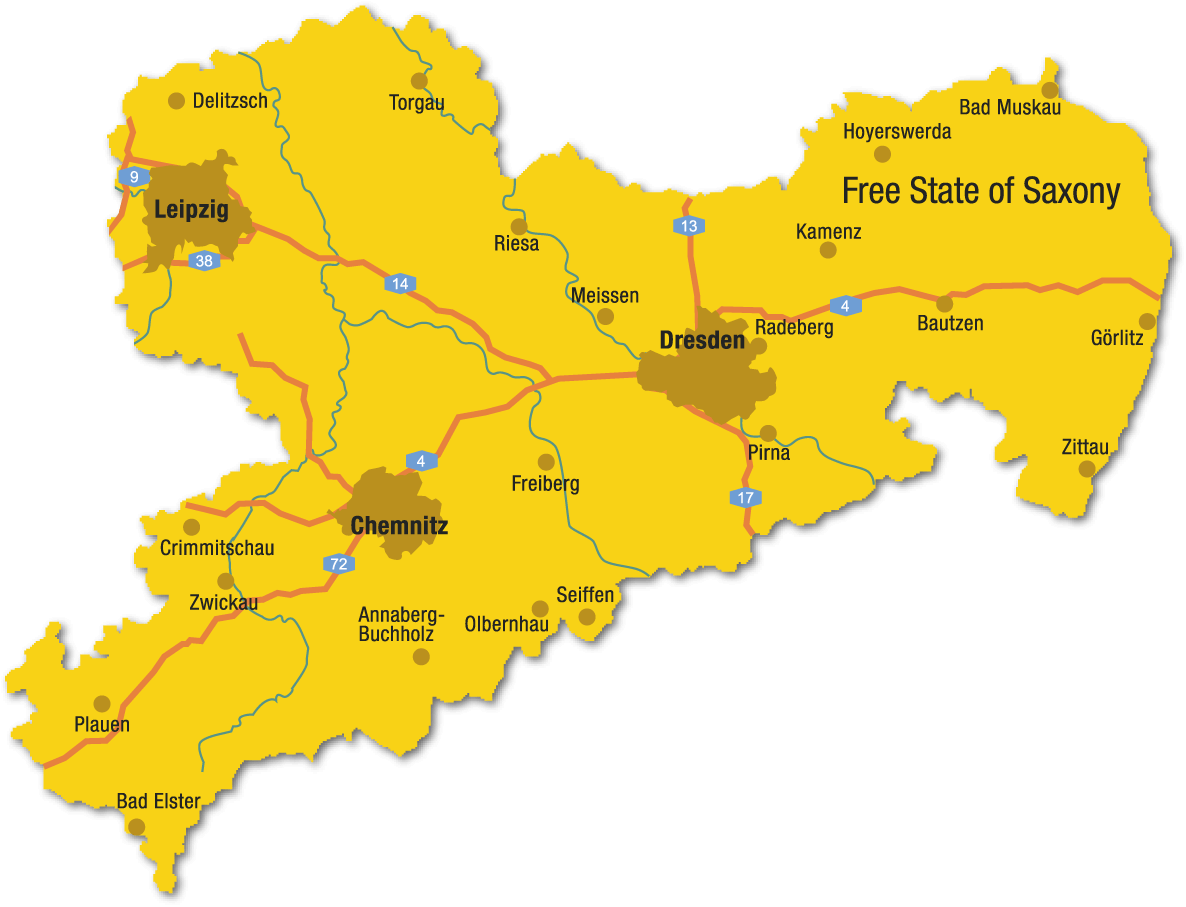[Translate to English:] Als August der Starke Anna Constantia als offizielle Mätresse an seinen Hof in das Residenzschloss nach Dresden holt, beginnt eine der berühmtesten Liebesbeziehungen in Sachsens Geschichte.
Folgen Sie dieser fesselnden Liebesgeschichte in einem Drama mit vier Akten an die Originalschauplätze im Schlösserland Sachsen. Starten Sie Ihren Ausflug auf den Spuren von Gräfin Cosel in der Innenstadt Dresden, am Residenzschloss neben dem Dresdner Zwinger und der Semperoper. Mit dem Dampfer, Rad oder Auto geht es weiter zum Schloss & Park Pillnitz. Nach einem Abstecher ins Schloss Nossen endet die Route auf Burg Stolpen, wo Gräfin Cosel 49 Jahre als Gefangene lebte und begraben liegt.
Countess Cosel (1680 – 1765) is one of the most enigmatic figures in the history of Saxony. Born as Anna Constantia von Brockdorff in 1680, she married the Saxon Senior Inspector of Taxes, Adolf Magnus von Hoym, in 1703 and came to Dresden with him. A short time later, due to her beauty and her charming presence, Anna Constantia conquered the heart of Augustus the Strong. When Augustus the Strong brought Anna Constantia to the Residential Castle Dresden as his official mistress, one of the most famous love stories in the history of Saxony began.
You can follow this gripping love story in a four-act drama at the place where it actually happened in Schloesserland Sachsen. Start your excursion on the trail of Countess Cosel in the centre of Dresden, at the Residential Castle next to the Dresden Zwinger and the Semper Opera House. Pillnitz Castle and Park can be reached by steam ship, bike or car. After a detour to Nossen Castle the route ends at Stolpen Castle, where Countess Cosel lived for 49 years as a prisoner and where she was buried.

Dresden Residential Castle – Celebrate & Love (A)
Anna Constantia received from Augustus the Strong, as his official mistress, the title »Imperial Countess von Cosel«. He proposed marriage in writing to his lover, who bore him three children. Together with the Taschenberg Palace, which it was connected to via a bridge, it constituted the city palace for Countess Cosel. For seven years she accompanied Augustus the Strong in everyday life as his consort in festivities. The exhibitions of the Dresden State Art Collections, one of the biggest art exhibitions in Europe, are in the Dresden Residential Palace. From the Hausmann Tower you have a grandiose view of Dresden’s inner city, Bruehl’s Terrace, the Dresden Zwinger and the Dresden Frauenkirche.
Details about Dresden Residential Castle
Further to station B – Pillnitz Castle & Park, about 14 km
Augustus the Strong obtained Pillnitz Castle for his most famous mistress. Countess Cosel made many enemies at court because of her cleverness and her arrogance as well as her attempts to interfere in political decisions. After Augustus the Strong turned his attentions to another woman, Countess Cosel moved in 1713 to Pillnitz, where she occupied herself with the redesign of the palace. In 1715 Countess Cosel fled to Berlin, because she refused to give Augustus the Strong’s written promise of marriage back to him. You can find the 250-year-old Japanese camellia, the orangery and the palm-tree house in the castle and park grounds of Pillnitz, which are directly on the banks of the Elbe river. In the palace museum there is a permanent exhibition about the history of the palace.
Details about Pillnitz Castle and Park
Further to station C – Nossen Castle, about 60 km
Pillnitz Castle and Park (B) – Fall from favour


After her flight from Pillnitz to Berlin, Countess Cosel was, on her arrival in Berlin, extradited to Augustus the Strong who had accused her of treason. On the return journey to Saxony Countess Cosel became very seriously ill. She was cared for at Nossen Castle for thirty days, and watched over by 40 men who were to prevent her escaping and having any kind of written correspondence. It is not recorded in which wing this prominent prisoner was held. Augustus the Strong ordered, on 9 December 1716, that Countess Cosel be brought to Stolpen Castle. There is a permanent exhibition and guided tour (which must be pre-booked) explaining the period of Countess Cosel’s involuntary stay at Nossen Castle. Nossen Castle hosts a small but fine exhibition on the subject of prominent noble ladies and their fates.
Excursion tip: About 3 kilometres to Altzella Monastery Park
Further to Station D – Stolpen Castle: About 75 km
Nossen Castle – Flight (C)
When the Countess’s health had improved, she was brought on 24 December 1716 – accompanied by a strong guard with strict security measures – to Stolpen Castle. Countess Cosel lived in Stolpen Castle for 49 years and eventually died there. Today one of the few remaining portraits, everyday objects, writings and the living rooms of the Countess can be seen in the Johannis (Cosel) Tower. The tomb slab of Countess Cosel, who died on 31 March 1765, can be seen in the former castle chapel.
Myth and truth, legend and reality, mix together here unlike with any other person. The special tour »The Treasure of Countess Cosel« aims to examine, on the basis of authentic sites, the adventurous and fateful life of Countess Cosel in more detail. (The Special Tour must be pre-booked.)
Stolpen Castle – Imprisonment and death (D)

